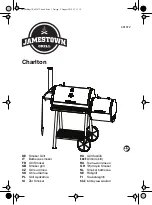
OPERATOR MANUAL // SECTION 1
TECHNICAL DESCRIPTION
HONEYWELL
13
Relay after the verification process will depend on the choice between
Latching and Non-Latching modes.
NOTE: When the Verify Relay is enabled and Verify Time
is set, the Fire Relay will de-energize when the Verify
Relay is energized.
2. Latching / Non-Latching
- The Fire Relay and Verify Relay may be
set in a Latching or Non-Latching mode.
The Factory setting for the
SS4-AS is Latching and the SS4-AS2 is Non-Latching.
If the
SS4-AS or SS4-AS2 Latching
mode is selected, the Fire or
Verify Relay will energize and Red LEDs will remain illuminated until
the Detector power is cycled (power is turned off then on).
If the
SS4-AS Non-Latching
mode is selected, the Fire or Verify
Relay will de-energize after 10 seconds and the Red LEDs will remain
illuminated until power is cycled.
If the
SS4-AS2 Non-Latching
mode is selected, the Fire or Verify
Relay will de-energize and the Red LEDs will turn-off after 10
seconds.
3. Test Period
- This setting pertains to the Through-the-Lens test
period, which may be set to 6 or to 30 minutes. The 6-minute period
may be required in applications where the lens is frequently obscured.
The Factory setting is 30 minutes.
NOTE: Utilization of the 6-minute period may adversely
affect the source tube service life.
4. IR-Only Enable / Disable
The IR only setting allows the Detector to declare a Fire on events
where UV is not present or is obscured.
In applications where UV absorbing fumes are commonly present in
high concentrations (these fumes are usually toxic and should require
masks or breathing equipment), the Detector will function.
The
Factory setting for IR-Only is Disabled.
WARNING:
This setting should be used only in special
indoor applications.
5. Fire Detection Range Setting
- 15, 30, 45, or 60 ft..
The Factory
setting is 45
ft.
.
This setting should be changed only if the Detector is
located too close to the fire threat area and in the presence of
abnormally high UV.
NOTE:
Refer to section 1.4.2. for Detector range
setting details for industry standards and specific fuels.















































